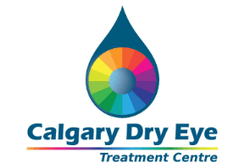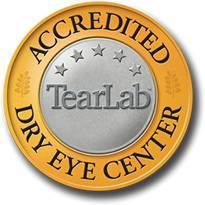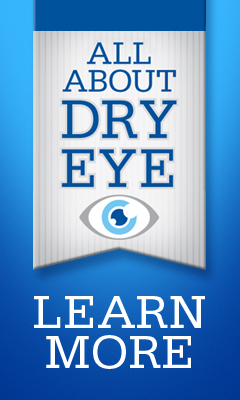What is dry eye?
Dry eye describes eyes that do not produce enough tears. The natural tears that your eyes produce are composed of three layers:
- The outer oily layer, which prevents or slows evaporation of the tear film;
- The middle watery layer; which moisturizes and nourishes the front surface of the eye;
- The inner mucus layer, which helps maintain a stable tear film.
Dry eye may occur because the volume of tears produced is inadequate (we all produce fewer tears as we get older, and in some cases this can lead to dry eye symptoms). It may result because the composition of the tears has changed so that they are unstable and evaporate more quickly.
Will dry eye harm my eyes?
If untreated, it can. Excessive dry eye can damage tissue and possibly scar the cornea at the front of your eye, impairing vision. Dry eye can make contact lens wear more difficult since tears may be inadequate to keep the lenses wet and lubricated. This can lead to irritation and a greater chance of eye infection. Therefore, it is important to follow the recommended treatment plan.
How is it diagnosed?
During the examination, you will be asked about your general health, use of medications, and work and home environments to determine factors, which may be contributing to dry eye symptoms. This information will help decide whether to perform specific dry eye tests.
To test for dry eye, diagnostic instruments that allow a highly magnified view of your eyes or small strips of paper or thread and special dyes to assess the quantity and quality of the tears may also be used.
How is it treated?
Dry eye cannot be cured, but your eyes' sensitivity can be lessened and measures taken so your eyes remain healthy. The most frequent method of treatment is the use of artificial tears or tear substitutes. For more severe dry eye, ointment can be used, especially at bedtime. In some cases, small plugs may be inserted in the corner of the eyelids to slow drainage and loss of tears.
To keep dry eye symptoms in check, you and your optometrist need to work together. If you have increased dryness or redness that is not relieved by the prescribed treatment, let us know as soon as possible.
How can dry eye hurt SO much?
The cornea (clear tissue covering the front of the eye) is very rich in nerve sensation. Most people, unless they have had an eye injury or other condition affecting the eyes, are not aware of how much pain the cornea is capable of producing. For many patients with severe dry eye, the pain can be literally debilitating. Even the discomfort from moderate levels of dry eye can give rise to major lifestyle alterations as patients try to adapt and avoid conditions that irritate their eyes.
My eyes are often watery. How can they be "dry"?
Painful, irritated eyes stimulate production of very watery tears. These are both a symptom of dry eye and can exacerbate it.
It seems contradictory that watery eyes could be a symptom of "dry eye". This is because "dry eye" itself is a bit of a misnomer. "Dry eye" is a catch-all term that refers to any abnormality - whether insufficient production, or imbalance of components - of the tear film. An abnormal tear film may leave the surface of the eye (corneal epithelium) vulnerable. When the surface becomes sore and irritated, the natural response of the eye is to produce "reflex tears", a less balanced type of tear the eye produces to flush out foreign bodies, protect the eye from wind irritation, etc. Excessive production of reflex tears may in turn make the tear film problem worse, because it may wash away or dilute some of the healthy part of the tear the eyes are producing.
Why does my eye feel like there is something in it?
This sensation, called foreign body sensation, is a very common symptom of dry eye. The sensation may be very localised, too, yet not be from anything in the eye.
Dry spots, or tiny injuries on the cornea resulting from dryness, may cause a painful or gritty sensation that feels literally as though there is something in the eye.
How serious can dry eye get if left untreated?
Mild to moderate dry eye conditions can usually be managed satisfactorily with artificial tear supplements, punctal plugs, lid therapy and other common treatments. Moderate to severe dry eye may affect vision more, and will probably affect quality of life a lot more because of chronic pain, eye sensitivity, light sensitivity and restricted activities. Very severe dry eye may lead to desiccation of the corneal epithelium, ulceration and perforation of the cornea, an increased incidence of infectious disease, and, potentially, serious visual impairment and blindness. Diagnosis and adequate treatment of dry eyes is important to your eye health!
Thanks to The Dry Eye Center for content used in the creation of this webpage. ©2011 - All rights reserved. Reproduction other than for one-time personal use is strictly prohibited.



